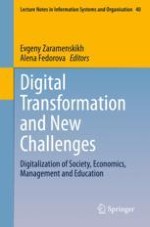2020 | OriginalPaper | Buchkapitel
Providing Models of DSL Evolution Using Model-to-Model Transformations and Invariants Mechanisms
verfasst von : Boris Ulitin, Eduard Babkin
Erschienen in: Digital Transformation and New Challenges
Aktivieren Sie unsere intelligente Suche, um passende Fachinhalte oder Patente zu finden.
Wählen Sie Textabschnitte aus um mit Künstlicher Intelligenz passenden Patente zu finden. powered by
Markieren Sie Textabschnitte, um KI-gestützt weitere passende Inhalte zu finden. powered by
